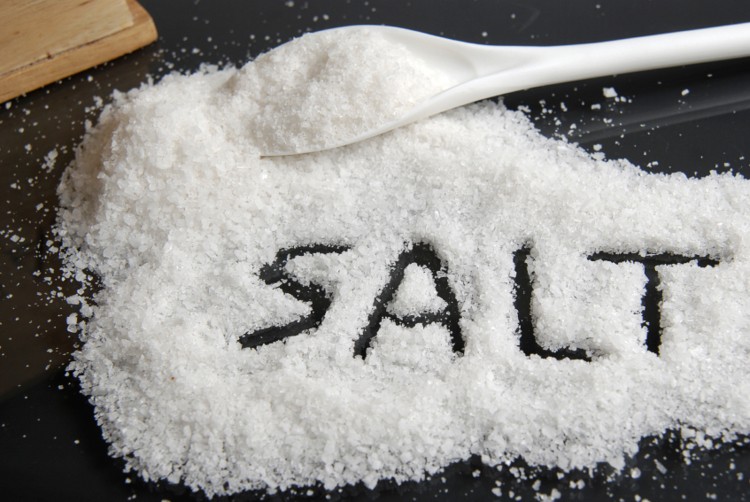
History of salt
Salt has been used for a long time. As Kurlansky mentions in his Salt book, ” the earliest written record of salt production in China dates to around 800 B.C. and tells of production and trade of sea salt a millennium before, during Xia dynasty, but they were considered old ways by the time of this account, which describes putting ocean water in clay vessels and boiling it until reduced to pots of salt crystals. This was the technique that was spread through Southern Europe by the Roman Empire, 1,000 years after the Chinese account was written.” The book explores the salt trade in the old days. Interesting how the trade route for salt expanded to the world. For example, Ancient Egyptians cured meat and fish earlier than 2000 BC before the Chinese Civilization. This fermentation and curing was invented and spread to the rest of the world. Another interesting fact that the book mentions; Egyptians imported olive oil from the Syrians, Cretans, or Middle East region. Middle East was well known in making olive oil and Egyptians preferred it over their own olive oil. Also, in the tomb, there was birds and mummies that were preserved with salt. Salt was important in various uses around the world. For example, salt was used for fertility during the old ages, salt trade between countries, religion rituals, food uses such as sourdough by Ancient Egyptians, and during wars such as the Roman Empire playing with salt prices to raise money for war. As you can see, salt has an important history that changed the world we live in today. Also, did you know that salt is one of the oldest food seasonings in the world, and an important part of food preservation. I recommend reading Salt – A World History by Mark Kurlansky; provides a lot of information on this interesting food seasoning.

Engy from Egyptian Streets mentions, “Eating Feseekh—salted smelly fish—is an impartial tradition of Sham El Nessim experience and it is perhaps the most distinctive food ritual associated with the day.” Ancient technique of salt production preserved in Tibet is also shown by ecns.cn.
Manufacturing
Raj Process Equipments provides a detailed description of the salt making process; brine solution, separation, and drying are part of the process to produce the final salt product.
Manufacturing issues
Manufacturing salt has a wide of variety of issues such as impurities & aesthetics. This is where food safety & auditors come in to prevent the contamination of the salt. It’s an issue in manufacturing salt and there are steps to take to prevent this. As Salt Safety Insights mentions, “You might startled to find a lot of things other than the pristine, all-natural, snowy-white salt listed on the ingredient statement. Look closely, and things such as rocks, rubber, sand. What’s more, the color of your sea salt might appear odd.”
Solutions
1- Anti-caking agents: Added chemical agents such as tricalcium phosphate are added to salt to prevent drying. Though, consumers are asking for clean label ingredients and manufacturers are looking at alternatives.
2- Water sourcing: sea salt contains traces of sand and other impurities that are removed. Also, where the salt is sourced a difference. As the Food Technology magazine mentions, ” it makes sense to choose a sea salt that is crystallized from the world’s cleanest oceans.”
3- Proper packaging: Packaging has to be transparent when sold to consumers. As the Food Technology Magazine states, “It’s an invitation for you to visually inspect what you are purchasing, and a simple thing to consider when choosing who will supply your ingredient salts.”
Saltwork is an example of a company that sources its salt from the cleanest oceans, and provides the highest quality of inspection such as GFSI, GMP, HACCP, and SQF.
Moisture absorption of salt
Salt has a Hygroscopic property. By nature, salt will absorb and retain moisture from the air. This causes salt to clump or turn sticky. As Salt Association mentions, “absorbs moisture from damp atmospheres above 75 per cent relative humidity – below this, it will dry out.” Genuine ideas provide a diagram of salt crystals that adsorbs water vapor, and compares the difference after five hours.
References
- Salt Safety Insights (February 2020). Food Technology – Advancing Food & Health Through Sound Science. Page 54-55.
- Salt Association. Properties of Salt. Website: https://www.saltassociation.co.uk/education/properties-of-salt/
- Kurlansky, Mark. Salt – A World History (2002).
- Saltworks (2001). Website: https://seasalt.com/
- Adham, Engy (April 17, 2017). Salted Fish Carries Taste of Spring All Way from Pharaonic Egypt. Egyptian Streets. Website: https://egyptianstreets.com/2017/04/17/salted-fish-carries-taste-of-spring-all-way-from-pharaonic-egypt/
- Raj Process Equipments and Systems Group PVT. LTD. (2009). Website: https://www.raj-turnkey.com/salt-processing-plant.html
